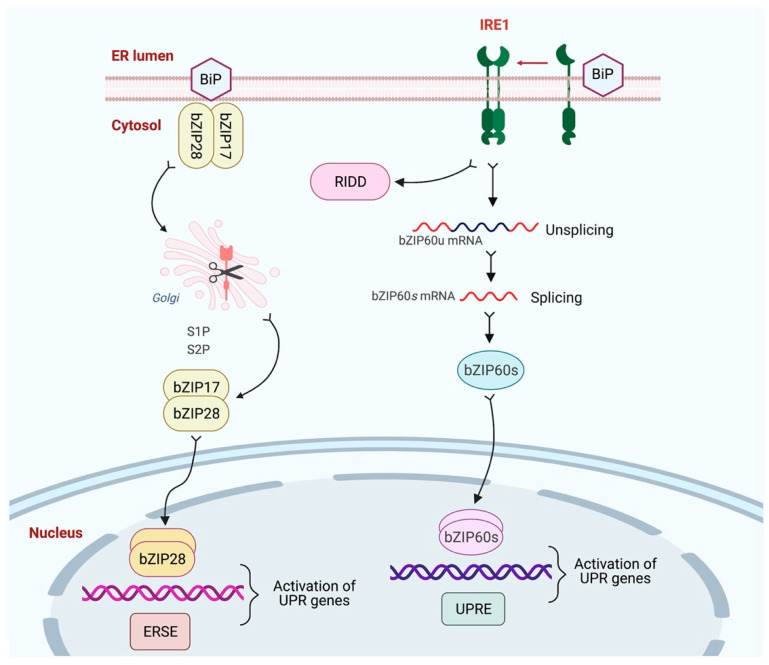Figure 3.
Overview of the pathway for UPR signaling. UPR signaling pathways in plants have two arms/branches. One branch contains the dual protein kinase and ribonuclease, IRE1, responsible for splicing bZIP60 mRNA when activated. The other branch is mediated by bZIP17 and bZIP28, two ER membrane-anchored TFs. A frameshift is introduced by splicing bZIP60(u) mRNA so that the resulting spliced type bZIP60(s) mRNA is translated into a nucleus-targeted TF. In response to ER stress, the bZIP17 and/or bZIP28 are mobilized and transported to the Golgi, where resident site-1 and site-2 proteases process them and release their cytosolic TF domains [bZIP17(p) and/or bZIP28(p)] into the cytoplasm for further importation into the nucleus. The bZIP17(p) and bZIP28(p) can homodimerize or heterodimerize in the nucleus, where they bind to the promoters and regulate the expression of genes that respond to stress. This figure was created using BioRender software.

